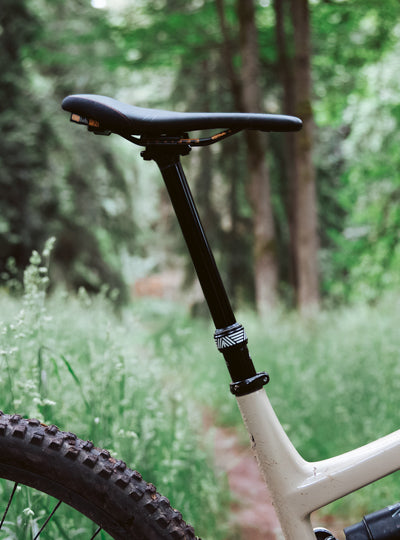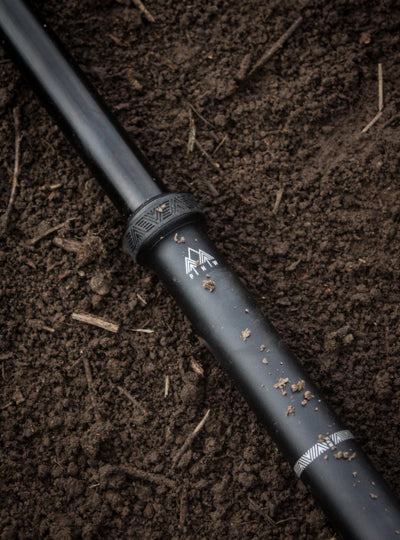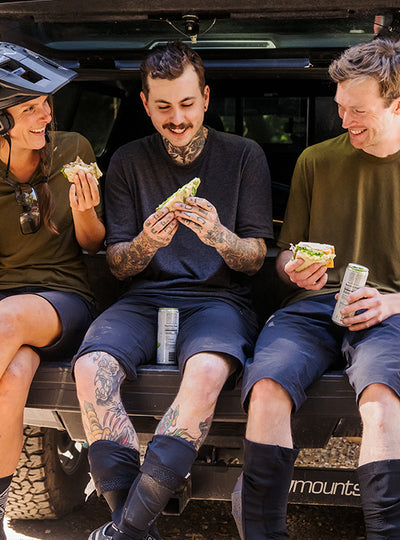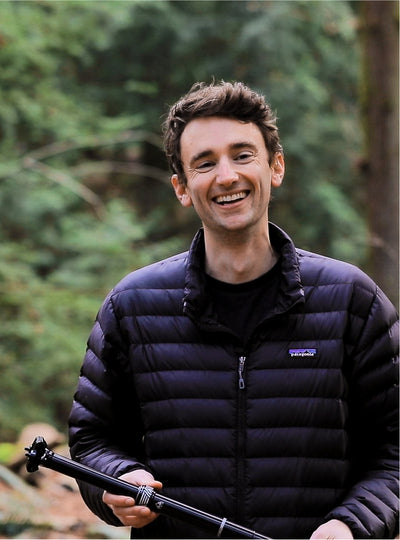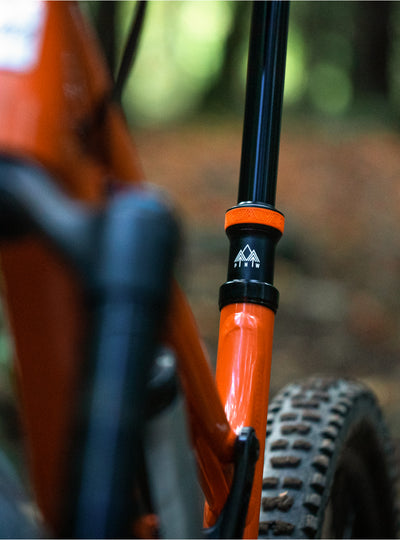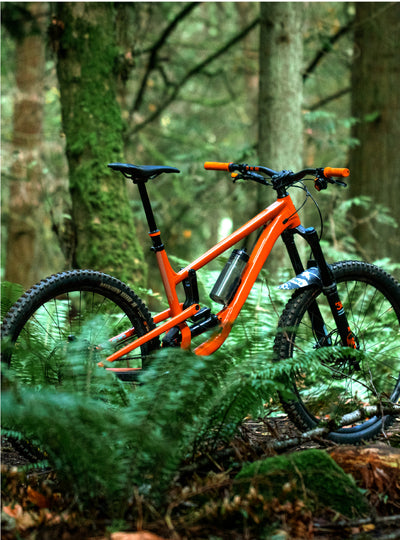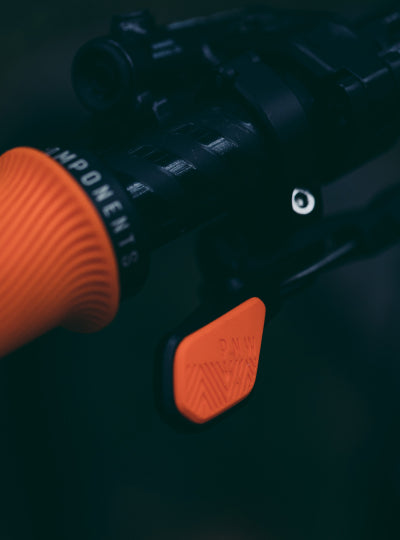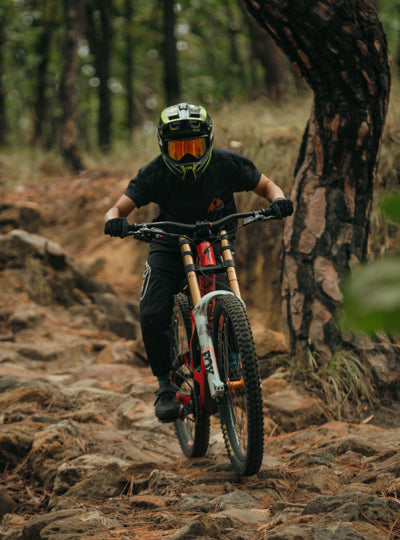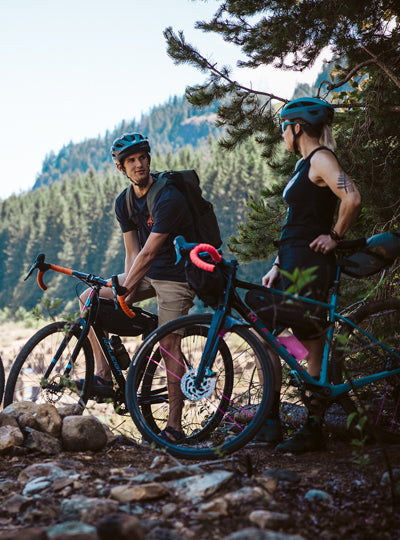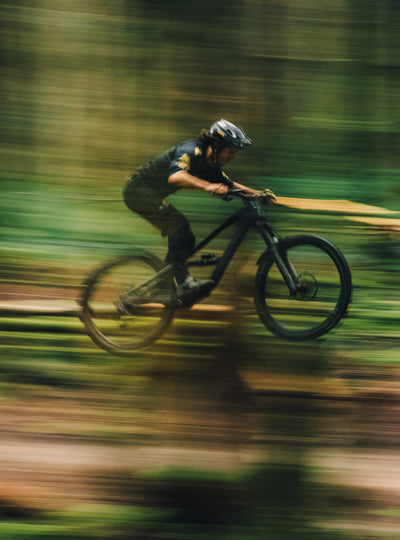Mark Matthews is not your traditional pro mountain biker. He's carved out a unique place in the bike industry, pairing his skills on two wheels with jaw dropping shots of big mountain adventures. Building a career around what he loves to do thanks to hard work and creativity is one of the many reasons why we are stoked to partner with him in 2019… not to mention, he’s a bad ass rider. We chatted with Mark about how his entrepreneurial spirit shaped his path, what got him to where he is now and navigating through the bike industry as a sponsored rider.

So what got Mark into this sport? It started with BMX and dirt jumping, but the evolution to mountain biking comes from where all good shenanigans begin: the older kids in high school. “Remember when urban riding was a thing?” he reminisces. “Well these kids were jumping stair sets on their mountain bikes at the school. I thought ‘whoa this is crazy!’ and they would go ride the trails up the hill behind the school and they could just ride way more on those bikes, and I was like ok this is rad, I got to get into mountain biking.”
Mark got into riding when Free Ride was on the rise, right when the infamous videos like New World Disorder and Ride to the Hills came out. While his proximity to the North Shore helped inspire his direction on the bike, where he grew up he was forced to get creative. “Where we lived, right outside of Victoria B.C. it was more of a farm area, a little more flat. There wasn’t really much to ride at that age because you couldn’t drive. I would always see stuff from the North Shore, even though it’s just a ferry ride away, its so out of reach when you’re that young. But we got hyped on that and I had friends that would build wood stunts in their backyard.”
 Tail whip, Photo by Cole Fulton
Tail whip, Photo by Cole Fulton
His buddies from those days eventually moved on, some of them are either in the bike industry or just ride for fun, none of them pursued the sport like Mark did. “I had always been a really competitive athlete. I played hockey a lot when I was younger.” But hockey started to lose its appeal when he would be in a game, thinking about riding his bike. When he quit hockey to pursue biking, this idea of becoming a professional biker still hadn’t solidified. It was something he was actually pretty ambivalent about at the time, “I wasn’t a super confident kid, I was very introverted and quiet. I thought, riding is fun but I will never do it as a career, I didn’t really think of myself that way, but I still kept doing it because I loved it so much.”
After high school, he started pairing biking with his interest in video and photography. He met up with Aaron LaRocque, and they started filming on the weekends. This was back in 2008/09 and LaRocque’s personal project at the time was the movie “What’s Next” which featured Mark and other up and comers from the Vancouver, BC area.
This is when Mark got his first sponsors. While some of it was positive, he also ran into the more unpleasant side of navigating the bike industry as an athlete. “We did a road trip to the Kootenays, and I noticed a brand using clips from the video, and all this other stuff that we filmed.” Because he had done all this unpaid advertising work for the company he advocated for himself, but immediately hit a wall. He recollects, “they got angry, and told me I was lucky they were promoting me. That was my first experience trying to figure out how the bike industry worked, and I got kind of frustrated.”
But he kept riding and perfecting his craft. That’s when he was living in Whistler with Reece Wallace during the summer, biking everyday, and going to school in the winter for Sports Marketing at the University. Not only was he growing his knowledge about the business side of pro sports, he got on the NSMB team, who were sponsored by Specialized Canada and SRAM at the time. He remembers this as a pivotal time, “I ended up getting free bikes, and they had the truck to use so we could ride all over BC. I wasn’t getting paid but I didn’t have to pay for bikes and I didn’t have to pay for gas on trips, so that was massive for me. This was only 6 years ago, so a lot has happened since then.”
 Mark in the BC Interior : Photo, Mason Mashon
Mark in the BC Interior : Photo, Mason Mashon
Back in the NSMB days, Mark and his friend Mason spent a week driving between through the BC interior, finding big mountain lines along the Fraser River. Mason, who is mainly an action sport photographer, told Mark about a pro skier buddy of his that had a big Instagram following. Mark remembers Mason telling him “yeah he’s got over 10,000 followers, and this audience makes it way easier to leverage deals with sponsors, and his content is also really good.”
Mark looked at his Instagram feed, “Back then I would post mostly dumb stuff that I thought was funny, maybe something from a ride, but nothing was thought-out or good quality. Then I would have one odd good photo in there that I would post up with no caption.” This was back when Instagram had 30 million users, which might sound like a lot but these days the platform boasts over 1 billion active users. The phone app wasn’t viewed as influential yet, especially in the bike industry, and although Mark had his own doubts at the time, he went to work on sharing his adventures with his growing follower base. “I kind of thought, maybe I can do this because no one else is doing it. At that point I didn’t know it was going to take off, many people saw it as a stupid hipster app.”
Not many pro riders were on Instagram, making Mark’s mountain bike and landscape photos even more influential. Once he made the effort to do it consistently, people started connecting with his profile, and his following grew to 20k in a matter of months. Long before we started PNW, and were kicking around the bike industry, we remember discovering Mark’s feed and thinking this was really something new and interesting. Mark has grown his following to over 174k now.
Instagram opened up a new outlet for him and his sponsorship with NSMB was going well. But if you peel back the layers of any athlete’s story you’re going to find moments of profound adversity. For Mark this came disguised in the form of an invitation to RedBull Rampage in 2013. Friends like Geoff Gulevich and Darren Berrecloth had vouched for him, knowing he would be a strong rider for the event.
Mark still remembers the details of his run. “If you watched Rampage in 2012, Gee Atherton’s line, he had this crazy stepdown against a cliff that he crashed hard on. I used this feature for my run. It was fully exposed on the left, and if you went too far right you would smoke the cliff like Gee did. It was completely blind going into it. Mitch Chubey and I were doing that line together in 2013, we rebuilt it to be safer and we spray painted lines on the take-off to guide our line off it. My speed was perfect going into it but my line was just a little far off, I was above the landing when my pedal just scuffed the cliff to the right.”
 Rampage Crash Sequence, Photo by Steve Robert
Rampage Crash Sequence, Photo by Steve Robert
The crash itself wasn’t “that scary” he says, because he thought he was landing it until the last second. Onlookers would have seen him tossed off his bike into a front flip at full speed, but oddly he didn’t really have a scratch on him when he landed. The first thing he checked for was if he could feel his toes, because the impact had been so hard, “paramedics were on me right away, and figured that my back was fine. They got the stretcher and it was a very long ambulance ride out.” He thought it was a dislocated hip at first but in the hospital he found out he broke his femur in multiple spots.
Then NSMB’s program fell apart after Rampage. While he had just graduated his program at school, he was left with no sponsors, no job and he had to move out of his house in Whistler. Even worse, the degree of his injury made it unclear when or if he could ride again. “I moved back home right after Rampage, my parents helped me with my injury. They always made me feel like biking was a dumb career choice anyway. I wasn’t making any money doing it at the time… but I was doing stuff like Rampage so they were like “What the F*** are you doing?” And I was super bummed because I felt like all this momentum that I had built up over the last few years was falling back down.” While Mark felt like he was back at square one, the same attitude and persistence that helped him succeed in the terrain of extreme sports, would help him advocate for himself throughout his recovery.
First it started with something questionable. Dealing with the mounting frustration of an injury of that magnitude and the added stress of moving back in with his parents, he started going road biking. He couldn’t put any weight on his leg yet, but he could sit on the bike. Sometimes he would go out all day, up to 100km rides. While the road biking might not have been advised, he also started making health conscious decisions about his physical recovery, eating 100% celean, eliminating sugar and alcohol from his diet completely. He even ditched the painkillers, flushing them down the toilet, “which I immediately regretted that night because the pain was too unbeareable to sleep.”
Still, at his 6-week check up in Victoria the doctor was discouraging. Telling him it wasn’t going to heal properly, and at the time it wasn’t. During that first 6 weeks back at home the injury wasn’t getting proper blood flow. He ended up finding a used ultrasound machine on Craigslist and taking natural supplements for Osteoporosis, to promote bone growth.
These are the moments people don’t think about when it comes to pro athletes. Sure, you hear about the injury, and cheer on the come back, but the stresses of being in business for yourself are exemplified when coming back from a big injury. As Mark puts it, “stability is one of the things that is hard to guarantee as a pro rider.” Although he knows he wouldn’t have it any other way, “I never want to work for anybody else. I’m definitely an entrepreneurial spirit. If I were to lose all my bike sponsors today, I would find a shitty part time job to temporarily fund my other projects.”
Three months after Mark’s crash in the desert, he finally was seeing improvements. Down to a cane, he remembers thinking, “Sweet! I can kind of walk… I am getting out of my parent’s house.” So he moved to Vancouver, worked part time at a bike shop, got on board with Knolly, and started from scratch again. This is when his style of riding and sharing what he was doing started to take form.
 Getting Sideways, Photo by Steve Robert
Getting Sideways, Photo by Steve Robert
There wasn’t a set plan in place, the year after his crash was primarily about having fun on the bike again and getting confidence back. “I didn’t plan on changing what I was doing, I just wanted to ride a lot and see where it would go.” Part of this was committing to the type of riding he wanted to do. A trip with Marcus Riga, the photographer for Knolly at the time, helped solidify the adventures he would go on to pursue. His first big ride after his injury was a backcountry trip to the Chilcotins. He recalls, “I wasn’t fit at all. I had never really pedaled before Rampage, I would just ride the dirt jumps and bike park. Whenever I was riding a bike it was to get better at riding a bike, not to get more fit. So the guys just destroyed me on that ride.”
This was Mark’s first experience “going for a pedal.” He didn’t bring enough food or proper sleeping gear. The group had no GPS and were out in Grizzly country. The second night they got lost for 2 hours before they got back to their vehicles. Naturally, he was hooked.
Not only did he like capturing the adventure of riding, when he posted shots from the trip people connected with it more. He reckons this has to do with it being so relatable, “people care about this, and it’s different but equally as fun as landing a new trick or going to a big event.” This eventually would present the opportunity to expand these adventures past the confines of social media, connecting with tour companies to promote adventures and experiences.

Exploring by bike on a recent trip in Turkey, Photo by Bruno Long
These are the ideas Mark is navigating around now. He explains, “some of my friends, Jordie Lunn and Geoff Gulevich, are working with different tour companies around the world… the idea is ‘hey, I’m going into the backcountry for a week, come join me’. It’s a cool experience for everyone, you get to meet some really rad people. Last year in Tibet I met some of my favorite people I’ve ever rode a bike with. So I think I can see it going more that way, athletes connecting with their viewers more on a real life level, using a platform to do that.”
This goes along with his own professional goal, which is about creating impact. “Being a well-known rider or the best rider isn’t the end game, rather, I want to make a big impact. The what’s most important to me.” Connecting with fellow aspiring riders who love mountain bikes and the outdoors is a really good way to do that, not to mention a great footprint to leave.
Finally, Mark added some points about the changing landscape for riders and what it takes to build a career around your skills on the bike. “Even if I wasn’t getting paid to do this, I would still ride every day. Because it’s something I’ve loved to do for 18 years now. Love what you do, if it doesn’t make you happy, stop doing it. If you really love it and you really want to make a living doing it then you have to think about how to provide value to others. What will you give brands? How are you going to help? It’s all about helping other people and not yourself. I look at it as this: being a professional rider is just one part of the equation that funds my lifestyle, and I am solving a problem - I’m helping brands grow."
Follow Mark on Instagram here, and be sure to keep an eye out for some sweet projects coming up!




